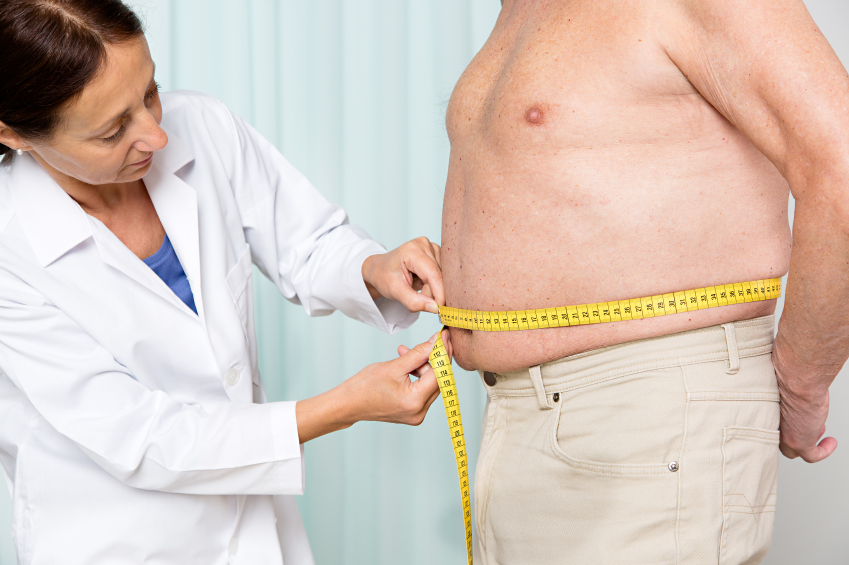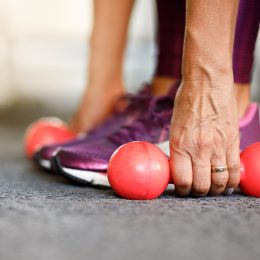What your waistline can reveal about your heart health

Spare tire, muffin top, love handles.
No matter what endearing terminology we use when referring to our waistlines, belly fat (let’s call a spade a spade) is the enemy. But not just because of its impact on your pants size and appearance — a thicker waistline also has a significant impact on your health.
Belly fat, specifically, increases your risk of heart disease and many other health conditions — that’s why paying attention to the size of your waistline may just be your lifeline.
What makes belly fat more dangerous than other fat?
Location, for starters. Most body fat is subcutaneous fat, meaning it’s located just below the skin’s surface. Belly fat includes subcutaneous and deep visceral fat, which builds up around internal organs like your intestines, stomach, liver and heart.
Unlike surface fat, visceral belly fat is biologically active so it creates a variety of toxins that cause inflammation, increase blood sugar and triglyceride levels, decrease your body’s sensitivity to insulin, and generally wreak havoc on the body’s ability to function. This “perfect storm” increases your risk of heart disease, type 2 diabetes and certain types of cancer.
Obesity in general is linked with many chronic health conditions, but one recent study from the Annals of Internal Medicine found that normal-weight people with big bellies have a higher risk of disease and death (more than 50 percent in men, and 32 percent in women) than obese people. Distribution of weight matters: Apple-shaped people are often at higher risk than their pear-shaped counterparts.
Additionally, belly fat is a stealthy foe, often keeping a low profile while the damage is being done. Many people who are generally healthy and have a body mass index (BMI) in the normal range don’t even consider belly fat a threat. But if your waist is larger than your hips, regardless of weight, fitness level or BMI, you’re at an increased risk for disease.
How much belly is too much belly?
One body type doesn’t fit all, but the National Institutes of Health’s general guidelines for safe versus unsafe belly fat are:
- Women: a waist measurement of 35 inches or more is too much belly.
- Men: a waist measurement of 40 inches or more is too much belly.
To get an accurate waist measurement, wrap a tape measurer around your natural waistline, above your belly button and below your rib cage (no sucking in). To find the right spot, you can also bend sideways — the crease that forms is your natural waistline.
Having a few inches of “wiggle room” is great, but it’s not a pass to throw your healthy habits out the window. Even if you’re well under the risk zone, keep an eye on that waistline. If your comfy 32-inch pants start feeling snug, it’s time to get your diet and exercise routine back on track!
Subscribe to our newsletter
It's quick and easy. You could be one of the 13 million people who are eligible.
Already a member? Click to discover our 15,000+ participating locations.
Follow Us
Winning the battle of the bulge
No big surprises here. Say it with me: diet and exercise.
You can do crunches and sit-ups until the cows come home, but that’s not enough. Eating a healthy diet high in fruits and veggies, whole grains, and lean proteins and dairy is important. Managing your portion sizes and calories is necessary. And incorporating physical activity (cardio and strengthening) into your daily routine will help you shed excess weight in your belly, and keep it off.
So if your waistline is trying to tell you something, it’s time to listen. Lose the belly fat and reduce your risk of heart disease and other health conditions. That spare tire is a worthy opponent, but you can win the battle.
Losing the weight is hard – is it really worth it?
You can reduce your cardiovascular risk by losing just 3 percent of your total body weight. And by shedding between 5 percent to 10 percent of your body weight, you can reduce that dangerous layer of visceral belly fat by up to 30 percent…
We vote “worth it.”




